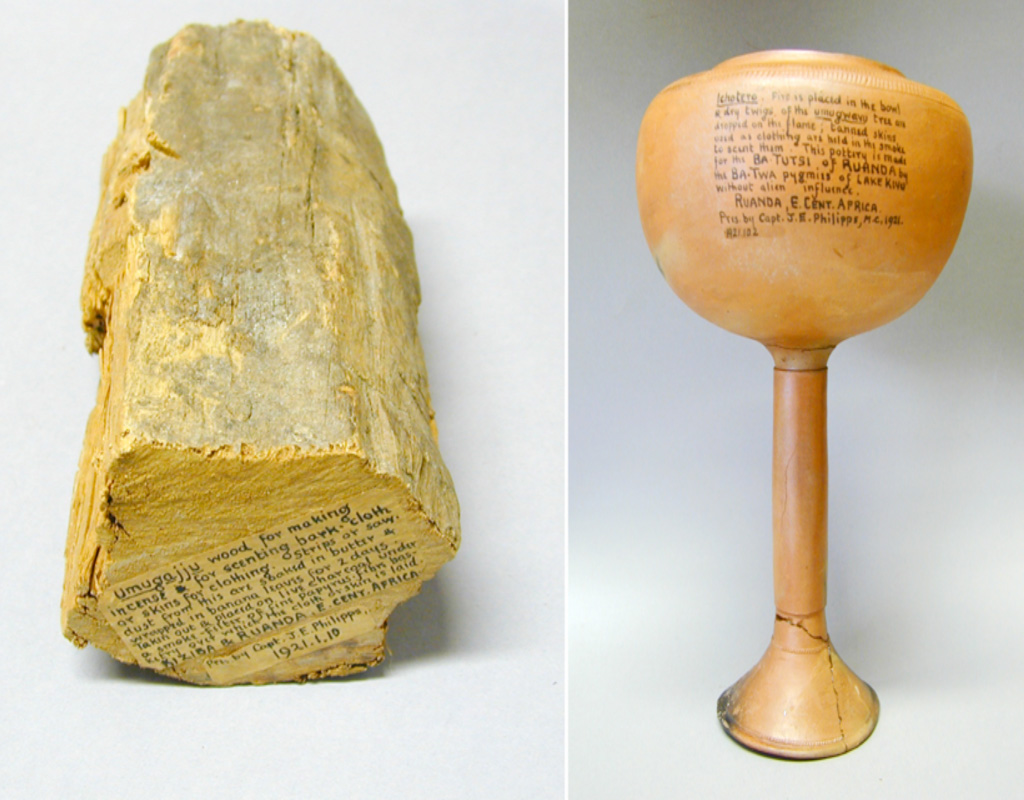Fumigation
Scented wood and fumigator bowl, Rwanda, early 19th century
 Collected and donated by J. E. T. Philipps in 1921; 1921.1.10 and 1921.10.2
Collected and donated by J. E. T. Philipps in 1921; 1921.1.10 and 1921.10.2
The very word perfume literally means 'through smoke' and burning is one of the oldest and widely used methods of imparting scent to something.
At the beginning of the twentieth century peoples of the Great Lakes region of Central Africa used this local wood to make incense. According to the collector, British diplomat and explorer James Edward Tracy Phillipps, the wood was known locally as umugajju or umugwavu. Strips or shavings of the bark were soaked in butter before being wrapped up in banana leaves. After two days the butter was placed on hot coals and clothes made of animal skin or barkcloth were placed on a fine basket mesh above the smoke to be infiltrated with the scent.
The bowl was used as to burn dry twigs from the same tree in order to create scented smoke for a similar purpose. It is of the red pottery typically made by the ancient Twa pygmy people (still a significant minority in Rwanda) for the ruling group in the region, the Tutsis.
